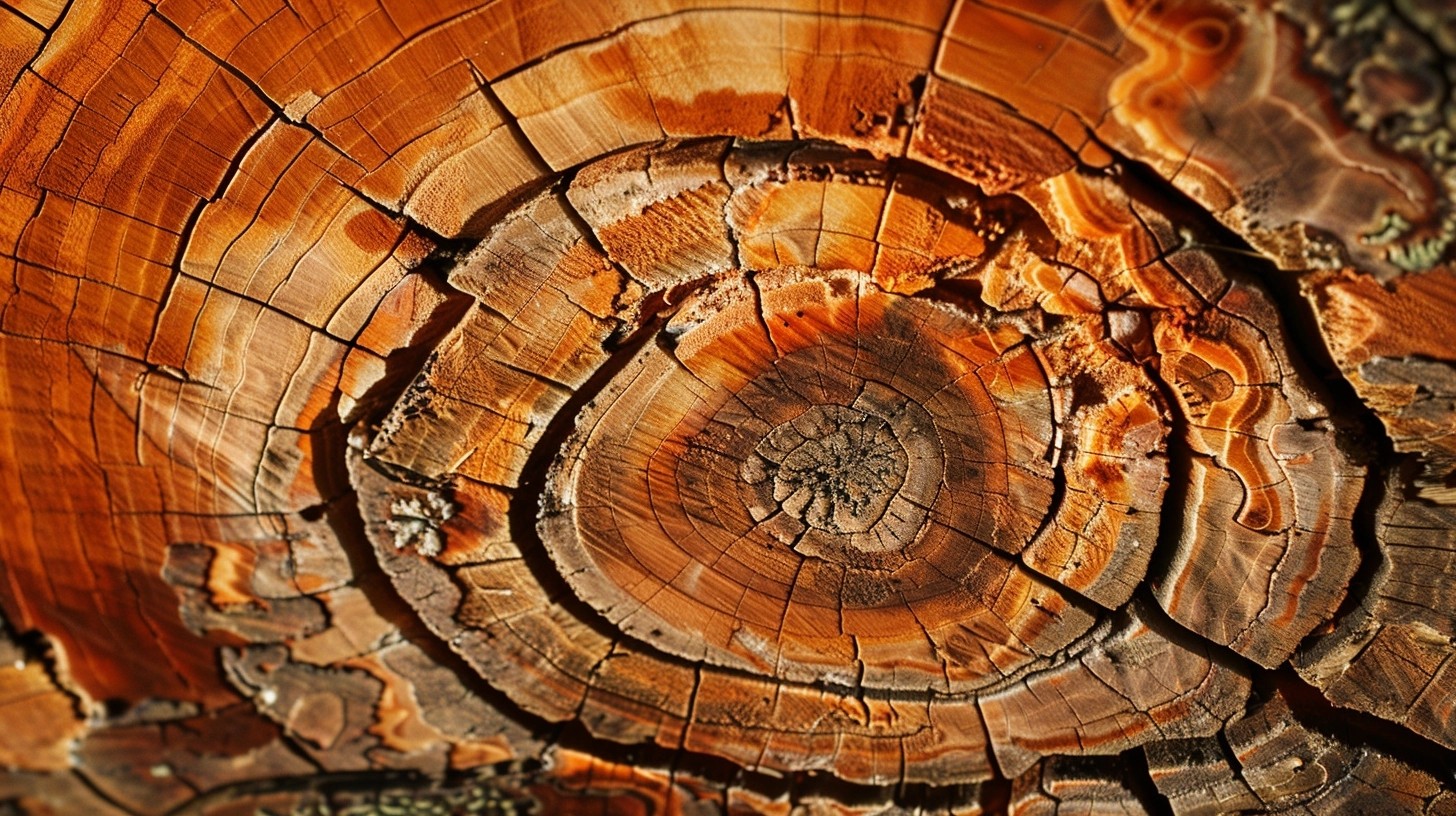Discovering the perfect perfume often feels like searching for a needle in a haystack, especially if you are drawn to the deep, woody hints of sandalwood. The allure is strong; yet, sifting through endless options to find a fragrance that truly speaks to you is tough.
The good news? You are not alone on this fragrant quest. Sandalwood, famous for its rich history woven through centuries of perfumery traditions around the globe, offers a base upon which countless aromatic creations are built.
In the following guide, I explore various scents, blends, and hidden gems in sandalwood perfumery. I cover its layers and share clear recommendations that will charm your senses. Ready to find your signature scent?
Why Sandalwood Captures Hearts
Sandalwood perfumes hold a special place among luxury and high fashion audiences. Their appeal is clear – a mix of deep, woody warmth with gentle, creamy notes that can take you to a far-off place.
This scent brings calm and style, making it a top choice for those looking for a balanced and refined perfume. Sandalwood mixes well with fragrances like vanilla, citrus hints, and musk, and becomes the main attraction.
Years of experience confirm that this flexibility is why sandalwood stays popular. Paired with floral jasmine for a charming scent or mixed with spicy patchouli for extra depth, sandalwood always holds its own.
Sandalwood makes perfumes that stand out and are full of subtle layers. Putting on a sandalwood perfume feels like wrapping yourself in mystery and classic style—a charm that is hard to ignore.
Sandalwood's magic lies in its special mix of compounds such as α- and β-santalol isomers (found at 15-25% in premium oils) that bind well with our olfactory receptors.
Tracing Sandalwood's Aromatic Legacy
Looking back over history, the charm of sandalwood in perfumery seems timeless. Its woody scent has won hearts for centuries and holds a key place in our scent choices.
I have tried many ingredients, yet few match the historic value and rich scent of this cherished wood. It started in old spiritual rites and grew to be central to high-end perfumes. Its path reflects an intriguing change in culture and longing.
This cherished note did not simply appear as a top choice; it earned it with its strong flexibility and warm scent that mixes easily with nearly every aroma—vanilla, citrus hints, musk, and more.
This special quality makes sandalwood essential for me and many other scent makers. It helps create unisex perfumes that hint at mystery and allure.
Wild Indian sandalwood has taken a heavy toll over time; more than 90% has been lost since 1950 due to heavy harvesting, and illegal networks now claim about 30% of global trade.
Exploring further reveals that this scent is more than a simple woody perfume; it presents a fine balance between strength and gentle notes—a contrast few fragrances can match.
Decoding the Mystique of Sandalwood Fragrances
Exploring sandalwood perfumes opens a space where elegant woody notes blend with soft, velvety accents to create a special aroma. I will show you every exciting step as you learn more about this scent.
The Many Faces of Sandalwood in Perfumery
I have always been drawn to the deep, woody note that sandalwood lends to perfumes. Its scent grounds you while offering hints of far-off allure. I will explain the different kinds of sandalwood used, and why this note is highly valued in perfumery.
- Indian Sandalwood (Santalum album) is the classic, most sought-after variety. Known for its rich, creamy aroma with deep, woody notes, Indian sandalwood has been a cornerstone in luxury fragrances for centuries. Its rarity and price tag reflect its status as the gold standard of sandalwoods.
- Australian Sandalwood (Santalum spicatum): A bit lighter than its Indian counterpart, it offers a more subtle woody note with hints of floral and green nuances. Perfumers love it for its versatility and sustainability, making it an excellent choice for modern blends.
- Pacific Island Sandalwood (Santalum austrocaledonicum): Sourced from islands like Vanuatu and New Caledonia, this variety brings a profile that sits between Indian and Australian sandalwoods. It weaves spicy notes into its woody base, adding extra depth to any fragrance.
- African Sandalwood (Osyris lanceolata): Often called African rosewood, though it is not true sandalwood—this variant imparts softer, balsamic hints to perfumes. Its use is less common but growing as perfumers seek new dimensions in woody aromas.
Regulatory bodies such as IFRA have approved 12 synthetic sandalwood molecules, including Ebanol® and Sandalore®, which broaden the range of scent compositions in modern creations.
Composing Harmony: Sandalwood's Best Companions
Sandalwood, with its warm and exotic scent, has a key role in perfumery. Its rich past makes it a popular base for many luxury scents. I will explore the other notes that mix well with sandalwood and lift its charm to new levels.
- Vanilla: This essential offers a sweet, creamy backdrop that boosts sandalwood's warmth. Together, they form a scent that feels like a gentle hug on a cool evening.
- Bergamot: Citrusy yet with a hint of spice, bergamot adds a spark of brightness to sandalwood's deep notes. Their union creates a balanced unisex fragrance that draws attention.
- White Musk: Known for its clean and subtle aroma, it pairs with sandalwood by contributing depth without overwhelming its natural character. The result is both charming and understated.
- Cedarwood Notes: Both cedarwood and sandalwood share a woody kinship yet differ in character. Cedarwood lends a sharper edge to sandalwood's creaminess, resulting in an earthy scent reminiscent of a brisk autumn walk.
- Patchouli and Sandalwood: When joined, these notes create an oriental fragrance. Patchouli brings musky, earthy tones that mix with sandalwood's softness, forming a spicy, woody perfume that is intricate and appealing.
- Amber: Warm amber notes blend with sandalwood to craft a mix that is both captivating and mysterious. This combination stirs nostalgic feelings while staying modern and chic.
Studies show that optimal formulations use 3-5% genuine sandalwood oil blended with ingredients like vetiver or tonka bean to boost longevity without masking the natural aroma.
Pioneering Aromas: The New Age of Sandalwood Perfumes
Exploring modern sandalwood perfume technology shows how IRFE redefines luxury with scents that marry time-honored practice and fresh ideas. This progress pushes us to look at exciting shifts in the perfume scene.
IRFE's use of premium sandalwood in their perfumes
I find the attentive way IRFE selects premium sandalwood for their perfumes captivating. This wood is more than average; it stands as a central note in style and luxury. Grown and gathered with care, it serves as the essence of perfumes made to inspire.
Sustainable Australian plantations now supply 80% of commercial sandalwood oil. The Santalum spicatum variety carries 60-70% santalols, echoing the deep notes of the prized Indian sandalwood.
IRFE mixes old perfume knowledge with fresh ideas. They know a sensual scent cares about both its opening impression and its lasting trail. By mixing pure sandalwood with notes like vanilla or bergamot, they craft attractive perfumes that are both alluring and enduring.
Modern biotechnology techniques now produce nature-identical santalol at 98% purity. This lowers the pressure on vulnerable sandalwood stocks and preserves traditional ingredients.
Crafting Magic: Innovative Sandalwood Mixes
Examining sandalwood in perfumery reveals a space where old art blends with new ideas. The rich base note wins praise, and the way this key scent mixes with other aromas adds extra charm.
Mixing sandalwood with vanilla creates a warm, inviting hug in a bottle. Its ability to join with uncommon scents, like spicy accents or soft floral touches, opens up a world of fragrant storytelling.
Regulatory and Trade Insights
New global rules, such as the EU Vigilance Law of 2024, push perfume makers to check their suppliers for ethical practices.
Data shows that over 90% of wild Indian sandalwood is gone since the 1950s because of heavy harvesting. Some producers now turn to lab-generated alternatives.
Innovations in Sandalwood Extraction Techniques
New methods have raised the bar in how sandalwood is transformed into perfume. Sustainable Australian plantations deliver 80% of the commercial oil supply, and the Santalum spicatum variety contains 60-70% santalols, offering a rich, vibrant scent that stands well with tradition.
Extraction technology has also stepped up efficiency. For example, CO2 supercritical extraction preserves around 92% more sesquiterpenoids compared to traditional steam distillation, which uses 150L of water per kilogram of sandalwood versus only 40L with CO2 methods.
Your Guide to Selecting the Perfect Sandalwood Essence
Finding your perfect sandalwood perfume feels like starting a sensory search that reflects your style and spirit. I share what makes sandalwood special—its deep history, warm blends, and tips to pick a scent that fits you just right.
Factors to consider when selecting a sandalwood perfume
- Scent Profile – A pure sandalwood note gives a woody, creamy base that can differ across perfumes. Choose blends that match your body chemistry, whether you like an earthy aroma or one with spicy, woody hints.
- Perfume Concentration – Eau de Parfum holds more fragrance oils than Eau de Toilette, which means it lasts longer on your skin. If you like a softer touch, try Eau de Toilette.
- Complementary Notes – Sandalwood pairs well with other notes to create memorable aromas or warm, exotic mixes. Decide which added scents charm you—vanilla for sweetness, bergamot for brightness, or patchouli for extra depth.
- Occasion Suitability – Some sandalwood perfumes work best for everyday wear, while others shine on special days. Think about when you will wear the scent, as many unisex options suit both day and night.
- Personal Preferences – Decide if you lean toward classic scents or modern blends that push familiar limits. Your style will guide your choice.
- Seasonality – Some sandalwood perfumes are warm and rich in winter but may feel heavy in summer. Consider different options for different seasons.
- Brand Values – Look at how a brand sources its sandalwood and if they stand by sustainability and cruelty-free practices.
- Budget – Fine sandalwood perfumes come at many price points. Find one that fits your wallet without cutting corners on quality.
- Longevity on Skin – Test the scent on your skin before you decide. A good sandalwood perfume should leave a lasting, gentle trace without overwhelming you.
- Instinct – Trust your gut. A perfume that clicks with your senses often tells you it's the one.
Many top brands now also follow regulations like the EU Vigilance Law (2024) to prove their commitment to ethical sourcing and supply chain transparency.
Crafting Your Signature: A Sandalwood Scent Journey
I have long held that choosing a signature scent is like uncovering a hidden piece of yourself. Sandalwood, with its rich, woody character, brings warmth and a mix of hints that echo your inner side.
- Start With Pure Sandalwood: Before trying complex blends, get familiar with pure sandalwood. This helps you detect its natural notes when it mingles with other scents.
- Identify Your Scent Preferences: Do you lean toward a blend of musk and wood, or does a citrus twist call to you? Knowing your likes guides your choice.
- Consider the Occasion: An alluring amber scent with sandalwood may be perfect for evenings, while a citrus-kissed sandalwood can brighten your day.
- Season Matters: Warmer scents suit cold days, so a vanilla-sandalwood mix might be best in winter.
- Skin Chemistry Is Key: Always test the perfume on your skin, as your body can change its nuance.
- Trust Your Nose: While tips are handy, the final choice should feel right on your skin.
- Sample with care: Try different brands, especially those known for quality woody scents like IRFE's premium lines.
- Layer Scents Carefully: If you mix perfumes, choose ones such as patchouli with sandalwood to add depth without crowding your senses.
- Think Beyond Eau de Parfum: Other forms, like essential oils or incense sticks, reveal how sandalwood adapts in different settings.
- Enjoy the Process: Finding your perfect scent should be fun. Allow yourself to explore and refine your taste over time.
It is worth noting that synthetic sandalwood oils show less than 0.5% batch variability, while natural oils might vary 15-20% due to changes in growth conditions.
Final Reflections: The Sandalwood Perfume Odyssey
Finding the right sandalwood perfume does more than add a bottle to your collection; it turns everyday moments into memories filled with warmth and style.
May this guide serve as your starting point for a fragrance that fits you and echoes your personal taste.
Recap of the benefits and appeal of sandalwood perfumes
Sandalwood perfumes shine with a deep, woody scent that hints at luxury and mystery. Their charm wraps you in an aroma that feels both steeped in history and refreshingly novel, making them a time-honored pick for those who want to express elegance.
This rich scent captivates with its talent to blend beautifully with notes such as vanilla, bergamot, and citrus, forming special scent experiences.
Sandalwood goes beyond its aroma. It sparks feelings and recalls memories. It grounds you while whisking you away to distant times and places. Its warm, exotic nature adds a signature touch for those who wear it.
As you explore different perfumes, note the lasting impression sandalwood leaves on both hearts and minds.
Final thoughts on embracing sandalwood in your fragrance collection
After reviewing the many benefits and strong appeal of sandalwood perfumes, take heart in knowing that this classic ingredient can lift your fragrance collection to new heights.
Adding sandalwood means welcoming a piece of history, luxury, and style into your daily routine. Its woody aroma carries mystery and has the power to turn a simple moment into a cherished memory.
Each sandalwood perfume is like a journey through lush forests and far-off lands. Whether you settle for pure sandalwood notes or mixes with hints of musk, amber, or citrus, a fragrant adventure awaits.
Choosing IRFE's premium line makes every use a special experience—a blend of art, tradition, and fresh ideas. Each bottle becomes an expression of style, radiating warmth and timeless elegance.
Spotlight on IRFE: Sandalwood Perfumery at Its Finest
Choosing sandalwood for your collection leads you to IRFE's outstanding offerings. Their skill in mixing premium sandalwood with other notes shows in every bottle.
I find their method refreshing. They capture the heart of woody scents. Their perfumes resonate with lovers of luxury and those who value fine fragrance.
IRFE's commitment to crafting perfumes with pure sandalwood speaks volumes about their drive for quality. Every bottle reflects a passion for creating appealing, earthy aromas that linger long after you leave.
Notably, their closed-loop distillation process recovers 95% of the water used during extraction, which highlights their focus on resource efficiency.
Trust me, checking their range takes you on a scent trip through far-off lands. It is hard not to smile at the warm, inviting aromas they have artfully blended.
Sandalwood Perfume Enigmas Unraveled
1. What makes sandalwood perfume so special?
Sandalwood perfume offers a distinct, creamy smell that feels both soothing and inviting. It works well for those who wish to stand apart.
2. Can sandalwood perfume be mixed with other scents?
Yes. Blending it with floral or citrus notes forms a memorable aroma that is refined and bright.
3. How long does the scent of sandalwood perfume last?
Sandalwood is known for its lasting power. The warm, woody scent can stay from morning to night.
4. Is sandalwood perfume suitable for everyone?
Yes, its flexible charm means it fits many people. It works well for every age and gender.
5. Where can I find high-quality sandalwood perfumes?
You can buy them from trusted brands in specialty stores or online shops that focus on natural and handcrafted scents. They usually offer the purest mixes.
Research Disclosure: I conducted this guide based on firsthand experience, historical texts, and reputable industry sources. I reviewed known publications and trusted research in perfumery. This process gives clear and honest information in every detail.




